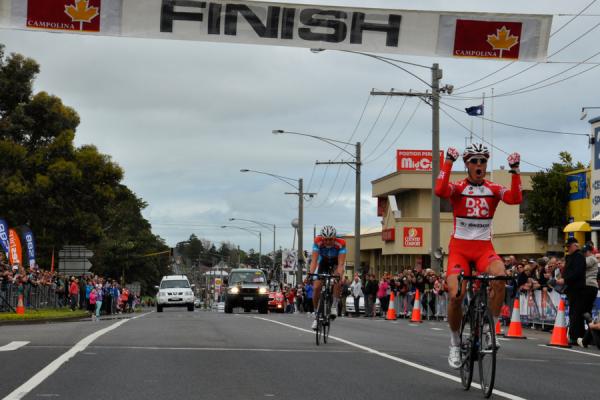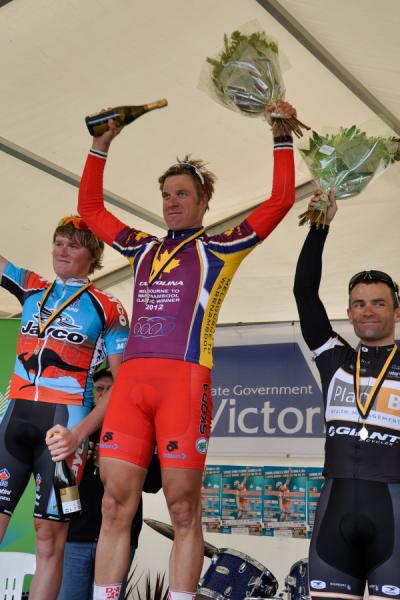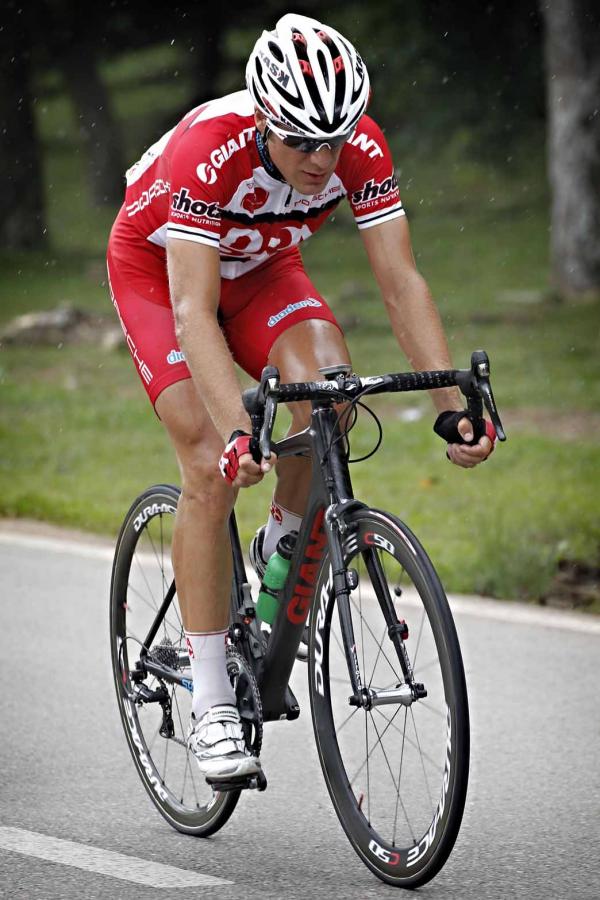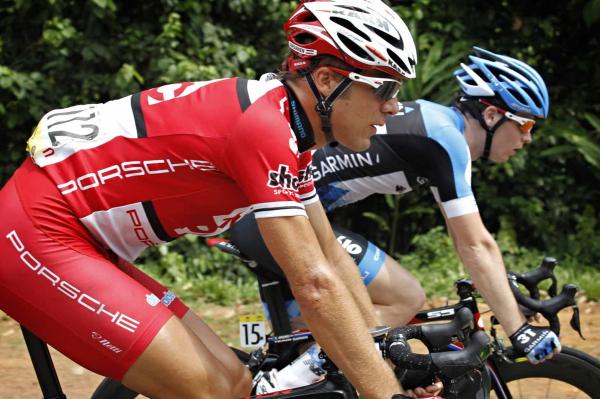Q&A: Goesinnen on how to win 'The Warny'
Drapac’s defending champion on Australia's toughest one-day race




Last year Drapac Professional Cycling's Dutch import, Floris Goesinnen, won the prestigious Melbourne to Warrnambool -known colloquially as 'The Warny'- to etch his name in the record books alongside a century of Australian cycling history. For Goesinnen, it was one of the peaks in a longer journey that has brought him halfway around the world and will soon send him back.
In 2010 Goesinnen was finishing up his 5th year with Skil-Shimano and putting his plans in motion for another season in Europe. At the same time his girlfriend Kim was far away in Melbourne completing her degree in medicine. Upon completion, Kim was offered a lucrative job to remain in Melbourne but chose to forgo it, instead taking a long term job in Holland so she could live with Goesinnen instead.
In a cruel twist of fate, Goesinnen learned not long after that his contract with Skil would not be renewed and had little choice but to take his chances with Australian team Drapac Professional Cycling. Ironically, Goesinnen soon discovered he would spend at least half of his year living in Melbourne.
The leap of faith, however, has paid off for Goesinnen as Drapac is eyeing a return to Pro-Continental level for next year. For Goesinnen, this means not only the chance to again race in the top echelon of world cycling, but more importantly, he can spend the majority of his year based back in the Netherlands.
The upcoming Melbourne to Warrnambool will be Goesinnen's last race for his Australian campaign, and with Pro-Continental teams not able to take part in National Road Series (NRS) events, it will be one of the last races he will start in Australia -TDU invitation pending- for quite a while.
Winning the Warny
The 98th edition of The Warny will be run over a slightly altered parcours of 256km and comes as the third last event in the Subaru NRS. With a lifetime of crosswinds and gutter action, Goesinnen has been well-schooled in how to handle to rough and tumble that will be on offer on Saturday.
Get The Leadout Newsletter
The latest race content, interviews, features, reviews and expert buying guides, direct to your inbox!
Amongst the challenges faced by riders, one of the more controversial is the mass start aspect of the race that sees 119 individual riders from lower grades joining the other 119 NRS team riders on the start line. In essence, this grouping means a large contingent of riders racing have not raced in a large NRS level bunch before, and carnage can ensue.
Every year there are a number of crashes early on in the race, but as Goesinnen later explains; "It will only be for the first hour anyway."
At 07:30 on Saturday morning, Goesinnen will be rolling out with 238 other riders from Melbourne's outer western suburbs. For now, however, Goesinnen shares his advice with Cyclingnews on how to go about winning the Australian monument.
Cyclingnews: Firstly, what's the most important thing to do if you want to win the Warny?
Floris Goesinnen: The most important thing is not having to chase at all during the race so you can save your energy for the finale, and eating of course! Racing with a responsible team means you have to have people in early moves, even if they're not looking like they are going anywhere. Luckily with the aggressive NRS style of racing, the early breaks are often big and have a good chance of going the distance.
CN: Does Drapac have a specific leader coming into the race or will you just take it as it comes and make decisions on the road?
FG: With Drapac we don't necessarily have a specific leader. Especially in a one-day flat event, it's more like playing chess! Crits and hill top finishes are different of course. Working with no specific leader it also means we dare to play everyone's card if they are up the road.
Giving ourselves more inspiration to go with early moves and making it clearer to other teams we're not chasing groups with one of our own men. This makes it harder for other teams to mark our riders out of the race instead of just following one or two known big guns.
CN: What are your tips to avoid the carnage at the start? Is it a matter of skill and positioning or is there a bit of luck involved as well?
FG: I didn't notice the big carnage at the start last year. Okay, there was one or two crashes but this can happen in any race right? If the carnage refers to the bunch start with all the grades mixed my opinion is that if you want to win the Warny you should have the legs to ride through the wind and avoid dangerous situations.
It will only be for the first hour anyway. Especially with this year's predicted crosswinds everyone should be safe and scattered in groups over the road before you know it!
CN: Does it make it harder for NRS riders coming into such a long race when most of the NRS races are quite a bit shorter? Does that change the way you need to train for the Warny?
FG: Well everybody is racing the NRS in the lead up so that way we're all in the same boat. It does make the race more epic and harder to control because no team is used to a race this long. Even the bigger Australian teams that race overseas have probably done their last Asian trip at least three months before the NRS really kicked off. Riders who have been racing in Europe might have an advantage because they have raced 200km races a bit more recently.
260km is still a bit further though. Being a natural diesel myself, I haven't done any extremely long k's in training for the Warny. I'm more concerned with how to finish it off. The longest training ride I've done this year was a 6 hour, 180km ride which I did yesterday. I do quite a few relatively long slow 4-5hr days during the NRS season, so I've got them banked up from the last few months. But this is more to mix things up in between all of the intense racing.
You obviously have to train longer days for the Warny, but you shouldn't lose focus on the bigger picture. If you were to get dropped in the crosswinds early on then you might have to work on this more instead of solely worrying about the distance.
CN: And after this, your focus shifts toward a return to Pro-Continental racing next season, are you excited?
FG: Hell yeah! I think the intense punchy NRS racing has only upgraded my diesel engine to perform better in my second go at that level. Plus it changes my motivation. New races, new places, I can't wait!